|
On May 31st, our Church celebrated the Feast of the Visitation—that hallowed moment when Elizabeth was greeted by her cousin Mary and when Scripture tells us that the infant leaped in her womb. We hear that the very first thing that Mary did after she was visited by the angel Gabriel was go and visit her cousin Elizabeth. The line that always sticks out to me from this Gospel account of the Visitation is: “During those days Mary set out and traveled to the hill country in haste.” Mary did not just travel to visit her cousin - to celebrate the faithfulness of God and what He had done for her – but she traveled immediately, quickly, and with haste. Not only did Mary know that the good news of the Incarnation - of God dwelling in her very womb - was too good to keep to herself, but she also knew of the importance of showing up for those whom she loved most. One of the things I believe most firmly about our lives as Christian disciples is that when we encounter the faithfulness of God (either in our lives or in the lives of those around us) we are called to share it with others. It can be all too easy to think that the stories of Mary and Elizabeth - one conceiving by the power of the Holy Spirit and the other receiving the gift of a child after being called barren - is some far off story that happened 2,000 years ago and not something applicable to us. We must ask ourselves: Where have I experienced the faithfulness of God in my life? Where have I seen it around me? Where am I being called to share it? Am I making haste to get there? I was lucky enough to attend a school called Visitation High School; as you drove up the main drive to our school building, there was a beautiful statue of Mary and Elizabeth embracing. Every day I was reminded of the great joy that they shared with each other and ultimately the peace that came by believing that what was promised to them would be fulfilled. (Luke 1:45). In our hurting, broken, and messy world, we could use more moments of making haste. Making haste to show up for a friend that we know is suffering. Making haste to share the good news of Jesus with a family member or friend. Making haste to celebrate our loved ones even while we experience sorrow or hardship. It is the great privilege of the Christian to make haste like Our Lady, to show up and to share the good news that,“The Mighty One has done great things for me, and holy is His name.” (Luke 1:49). **This post was originally published on 6/13/2019**
0 Comments
On Trinity Sunday, one cannot help but think of a common greeting heard at Mass, “Let us begin as we wish to begin all things. In the name of the Father, and of the Son, and of the Holy Spirit. Amen.” How many times have we made the Sign of the Cross? Why do we begin Mass (indeed, every prayer) with the Trinity? Perhaps Trinity Sunday is the perfect day to ask, what does it all mean? During a General Audience, Pope Francis remarked, “The Mass begins with the Sign of the Cross. The whole prayer moves, so to speak, within the space of the Most Holy Trinity…” Perhaps we should look at the actions of the Trinity to see what God has done for us and thus see the true power of those words. A favorite hymn sung on Trinity Sunday begins, “O God Almighty Father, Creator of all things, The Heavens stand in wonder, While earth Thy glory sings.” Everything, from the smallest pebble to the tallest mountain and every living creature in between, is the result of God’s generative power. As the Catechism points out, “the totality of what exists depends on the One who gives it being” (CCC 290). And so, when we begin “In the name of the Father,” we remind ourselves of the awesome power God has to create everything from nothing. The second verse of the hymn goes, “O Jesus, Word Incarnate, Redeemer most adored, All Glory, praise and honor, Be Thine, our Sovereign Lord.” St. Paul reminds us, “In him we have redemption by his blood, the forgiveness of transgressions, in accord with the riches of his grace” (Eph 1:7). By his death and resurrection, Christ opened the doors of heaven for the faithful. The third verse says, “O God, the Holy Spirit, Who lives within our souls, Send forth thy light and lead us to our eternal goal.” The Catechism states, “By virtue of our Baptism, the first sacrament of the faith, the Holy Spirit in the Church communicates to us, intimately and personally…” (CCC 683). It is by the Holy Spirit that the knowledge of our faith is revealed to us. And it is through the inspiration of the Holy Spirit that we are able to live out our faith in the hope of reaching heaven. One thing that should be noted when talking about the Persons of the Trinity, is that while the Father, Son, and Holy Spirit may be three distinct Persons, they are still of one nature. This is what we mean in the Nicene Creed when we say that Christ is “consubstantial with the Father”—they are distinct but are of the same substance. The Father, Son, and Holy Spirit are each wholly and entirely God. Many times, when we talk about the Trinity, we appropriate certain actions to each Person, i.e. God the Creator and Christ the Redeemer. This is fine, so long as we remember that the Father alone did not create, nor did the Son himself redeem. All actions are done in concert as one Triune God. On this Trinity Sunday, when we make the Sign of the Cross, let us do so remembering what that action reveals – that God created all things, that through Him the gates of heaven are opened to us, and that with Him our faith is revealed. And let us always sing the chorus of that hymn we used above: “O most Holy Trinity, Undivided Unity; Holy God, Mighty God, God Immortal, be adored.” Questions for Reflection: Is there a Person of the Trinity that you go to most frequently in prayer? How can you continue to build your relationship with each Person of the Trinity? **This post was originally published on 5/24/2018** Victor David is a collaborator with the Catholic Apostolate Center and a staff member at The Catholic University of America in Washington, DC.
Tomorrow’s Feast of the Visitation of the Blessed Virgin Mary to her cousin Elizabeth celebrates an encounter between two unlikely mothers. What richness can be found in contemplating the embrace and companionship between these two women!
Luke 1:39 recounts how immediately after learning that she was with child, Mary traveled to the home of her cousin Elizabeth, who, despite her old age, was also pregnant. Learning about a pregnancy can bring with it a flood of far-ranging emotions, questions, and concerns that can leave one reeling; it’s not hard to justify a response of turning inward. Yet Mary set out in haste to be at the side of her kinswoman. In undertaking a difficult journey to be with another, our Blessed Mother highlights the importance of supporting and accompanying women, especially those who may be experiencing challenging or difficult circumstances. Indeed, when considering the two women in this Gospel passage, we can recognize an unexpected pregnancy, years of enduring the pain of infertility, and a great deal of uncertainty. Countless women today face these same struggles, often alone and in fear, with no idea of where to turn for support. It is our duty to offer these—and all women—the companionship Mary and Elizabeth shared. Motherhood (and the journey towards motherhood) presents physical, mental, emotional, spiritual, practical, and financial difficulties like no other. It carries with it utter bliss, heart-rending sorrow, and everything in between—none of which should be carried alone. In the Visitation, we see a model of how we are called to enter into the realities women face and offer support and accompaniment, especially to mothers who are most in need. As the USCCB’s Respect Life Prayer & Action monthly prayer guide for May put it: “In addition to ‘walking with’ mothers in love, support, and friendship, we can also help answer their needs for practical and material assistance. Inspired by our Blessed Mother, we can help connect mothers with the Church’s extensive network of social services to ensure mothers and their children obtain all the necessities of life. Through generous stewardship of the gifts God has entrusted to us of prayer, time, talent, and treasure, we can help meet the needs of mothers as they welcome and care for God’s precious gift of life.” I invite you to celebrate this feast day by imitating the example of Mary and taking the initiative to reach out to a woman in your community. While this may involve going a bit outside our comfort zone, each of us, no matter where we are in life, can offer this much-needed kinship. We don’t have to be in the same boat as a woman in need or know her pain or experience firsthand. We are simply called to walk alongside her, providing support, friendship, and encouragement. Accompaniment does not mean taking on or attempting to fix someone’s problems. It means a willingness to listen, to be truly present to another, to offer reassurance, closeness, and compassion. Reaching out to a woman in your community can take many forms, from working to enact systemic change (such as advocating for paid parental leave or working to ensure access to healthcare) to just grabbing a cup of coffee with a mom you know. Other concrete ideas for living out the spirit of the Visitation include offering to babysit, donating to or volunteering with a local pregnancy center, starting or joining a mom’s group at your parish, organizing a diaper drive, or making a meal for a family. You may consider getting involved with Walking with Moms in Need, the Church’s nationwide initiative that helps Catholics form parish teams to identify resources in their local area and connect pregnant and parenting mothers with support and services. For a woman struggling in her fertility journey, just lending an ear, offering to accompany her to a doctor’s appointment, or putting her in touch with someone else who has been there can make a huge difference. In every gesture of closeness, we will find ourselves enriched and accompanied in return. May we strive to emulate authentically the spirit of the Visitation, so that every woman can come to feel the profound embrace of kinship! **Image: https://artmuseum.princeton.edu/collections/objects/34052** In preparation for Pentecost this year, I began reflecting on its significance in my life and the life of the Church. When we as Catholics hear the word “Pentecost,” several things may come to mind. To some it is simply the birthday of the Church, to others it is the day signifying the end of the Easter season, to others still it may be a day that comes and goes without notice. That is how Pentecost was for me for a long time: a day that happened without me noticing until I realized a week later that all of the Easter decorations in the church were gone. As I grew deeper in my faith, I began to see the importance of Pentecost as the start of the Church and the reception of the Holy Spirit, but there was still something missing in my understanding of this day. I knew that Pentecost was supposed to be more than just a day that comes and goes each year, but I struggled to see how a day that happened two thousand years ago would impact the way I live my life today. When we look at Acts 2, we can see what Pentecost was like. It was a time of prayer, fasting, waiting for God to fulfill His promises, and the fulfillment of those promises in the descent of the Holy Spirit onto the disciples. The beauty of this event when we look at it in Scripture is that this is not something that happened two thousand years ago. We know that Scripture is performative, that it is living, active, and does what it says. If we as Catholics are disciples of the Lord, then that means that this living reality of the descent of the Holy Spirit is something that we can experience as well, and we do so through the sacraments. And as disciples who have received the Holy Spirit, we can follow the footsteps of the Apostles and take the Holy Spirit with us out into the world, spreading the good news of the Gospel to those we encounter, using the gifts of the Holy Spirit to bring glory to God. Saint Pope John Paul II, Pope Benedict XVI, and Pope Francis have all spoken about the coming of and need for a new Pentecost. As the world we live in grows increasingly secular, as the number of people who know and experience the love of Jesus Christ diminishes, it is our job as Christians, as missionary disciples, to cry out for a new Pentecost. We must ask for the Holy Spirit to fall afresh on us like He did at Pentecost, to give us the gifts we need in order to guide those around us to encounter God. Through the gifts of the Holy Spirit that we receive at our Baptism and Confirmation—wisdom, understanding, counsel, fortitude, knowledge, piety, and the fear of the Lord—we have the ability to listen to the Holy Spirit and be obedient to His will in our lives. When we live with recognition of this reality, asking the Holy Spirit to guide us and our actions, we can live as witnesses like the Apostles did after Pentecost, carrying Christ’s Spirit in us at all times, allowing Him to breathe His life and love into those we encounter.
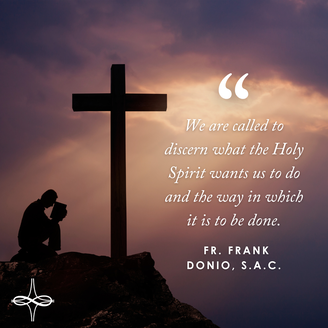 We can never forget that the Holy Spirit provides us with the ability to do what we do on mission for Christ. We can begin to think that what we do is simply of our own making. It is not. As with those in the Cenacle or Upper Room at Pentecost, we, too, have the power of the Holy Spirit moving and guiding us. We are called to discern what the Holy Spirit wants us to do and the way in which it is to be done. This part is a challenge. We want direct answers to our questions. When something gets difficult, we often want God to move those obstacles out of the way since we are doing the mission of Christ. And yet, one of the gifts of the Holy Spirit is wisdom, which teaches us that we are not in control, God is. As human beings, we so love to be in control, but we are not. God is and we, as believers, have faith which teaches us to trust in God and in God alone. Easier said than done. Being “filled with the Holy Spirit” (Acts 2:4), means that other things that fill us need to give way, especially the belief that we are in control. Instead, we are in what St. Vincent Pallotti called, “holy cooperation” with God. As baptized, we are co-responsible for the mission of Christ and the Church. He gave the mission to the Apostles to “go and make disciples” (Mt 28:19). We share in that same mission until Christ comes again! May the Blessed Virgin Mary, Queen of Apostles, intercede for us and the Charity of Christ urge us on! In Christ, Apostle of the Eternal Father, Fr. Frank While growing up, I remember seeing “Rejoice in the Lord always” (Phil 4:4) on the fridge every time I walked by. While telling my mom about this blog post, she said, “You have permission to use Philippians 4:4.” I joked, “I didn’t realize you had that verse trademarked.” This jovial interaction represents the joy of one of the saints we celebrate this week: St. Philip Neri. He’s known as the patron saint of joy. St. Paul’s Letter to the Philippians is known as the Epistle of Joy, so it’s fitting to see his name in PHILIPpians! What is joy? The secular use of “joy” is typically synonymous with “happiness.” Happiness is subject to what’s happening around you. Joy, on the other hand, is subject to our free will in choosing to abide in God’s grace. In this state of grace, joy can be equated with love (or divine charity). Happiness and sadness are opposed to one another, while joy and sorrow can be held together, even though they appear to be in tension. Our hearts can be filled with sorrow for what breaks God’s heart while still “entering the joy of the Lord” (CCC 1720). The reason we can have joy in this world is because “God doesn’t abandon His creatures to themselves. He not only gives them being and existence, but also…sustains them. Recognizing this utter dependence on God increases our wisdom, freedom, joy, and confidence” (CCC 301). “True happiness is found in God alone” (CCC 1723). How can joy help us connect with others? According to an article from the National Catholic Register, St. Philip “was known to show up to important events with half his beard shaved, give incorrect walking directions to his disciples, and read a book of jokes.” He believed that these behaviors helped him to connect with other people through being present and humble. He taught that “a joyful heart is more easily made perfect than a downcast one.” St. Paul used joy in his evangelical efforts as well. He was fully aware of the brokenness in his story, and he couldn’t keep God’s grace to himself. Love changes us and spreads like wildfire. St. Paul was knocked off a horse and given a new name. He went from threatening Christians with death to causing Christian conversions that brought new life. St. Philip became known as the “Apostle of Rome” and earned the respect of believers and non-believers because of the joy he exuded. His heart was physically enlarged because of his love and faith in the Lord…so much so that his ribs were broken! Love has no room for fear. One of the most common fears is public speaking. Something that St. Philip and St. Paul did not fear was sharing the faith with people they encountered. They were missionaries of love passionately sharing the love of God that they discovered richly in their own lives. St. Philip said, “God doesn’t ask us to do the impossible. He asks us to do what is possible with God’s grace.” How can we find joy in the face of evil in the world? In the last days leading up to His passion, Jesus said, “So you also are now in anguish. But I will see you again, and your hearts will rejoice, and no one will take your joy away from you” (Jn 16:22). In the wild times we live in, joy sometimes can be hard to find. Discouragement and confusion are often tools of the devil as he tries to distract us from this promise of Christ: joy can ALWAYS be ours. Jesus used the most unimaginable instrument of torture as the awesome instrument of salvation. On Good Friday, the Devil thought he won. On Easter Sunday, God turned the Cross into a gift. If you want to confuse the devil, be joyful. When St. Paul was imprisoned in Rome, one could think his ministry would cease. Instead of giving into discouragement, St. Paul wrote the Epistle of Joy to the people of Philippi thanking them for the blessing that they were to him and encouraging them in their faith. St. Paul stared death in the face a number of times before his beheading in Rome, but we don’t have to have these dramatic experiences to embrace our mortality. St. Philip suggests that we “prepare for death and live each day as if it were our last. Fill up days with goodness and don’t let them be squandered.” When asked what time it was on his deathbed, St. Philip said, “It’s eight… in an hour it’ll be nine, then ten, eleven, and midnight.” His companions responded by giggling before going to sleep. His legacy even in his last moments is joy! How can we be apostles of joy today? St. Philip suggests, “Have all the fun you want, but just don’t offend God.” He also suggests, “Cast yourself into the arms of God and be very sure that if He wants anything of you, He will fit you for the work and give you strength.” St. Paul says, “Rejoice in the Lord always. I will say it again: Rejoice! Let your gentleness be evident to all. The Lord is near. Do not be anxious about anything, but in everything, by prayer and petition, with thanksgiving, present your requests to God. And the peace of God, which transcends all understanding, will guard your hearts and your minds in Christ Jesus” (Phil 4:4-9). Let us ask the Holy Spirit to fill us with an abundance of the spiritual fruit of joy! We pray for the intercession of St. Philip and St. Paul to show us how to radiate joy no matter the circumstances around us. St. Philip Neri, patron saint of joy, pray for us! St. Paul the Apostle, writer of the Epistle of Joy, pray for us!
A second wind is often an unexpected gift. Whether it is discovered during a run, study session, or some other activity demanding intense focus and effort, what at first seems daunting and impossible to achieve suddenly becomes possible thanks to newfound strength and endurance. A second wind, while surely appreciated physically or mentally, can also be applied spiritually. As the Church celebrates her birthday on Pentecost Sunday, we can reflect on the incredible gift of the Holy Spirit who was sent by God Himself to provide the fledgling Christian faith a much needed second wind as apostles prepared to bring the Good News of Christ to the entire world.
One of the Gospel readings for Pentecost details our Lord’s promise to send the Holy Spirit to His disciples. In an earlier related chapter from John’s gospel, Christ Himself walks with the disciples and predicts His own Passion. He assures the disciples that they will not be abandoned as orphans, but will share in the very life of the Most Holy Trinity (John 14:15-31)! The consolation and comfort Jesus brought to those gathered in the Upper Room after His death and resurrection surely reminded them of this though He ordered them to not leave Jerusalem until “the promise of the Father” had been sent (John 20:19-23). It would not be until after Christ’s ascension, that the Holy Spirit would be sent upon the disciples and so enable them to carry out the Great Commission of our Lord, “Go therefore and make disciples of all nations, baptizing them in the name of the Father and of the Son and of the Holy Spirit, and teaching them to obey everything that I have commanded you.” While Christ had sent out the disciples to evangelize before (see Luke 10:1-20, cf. Matthew 10), these efforts were limited to “the lost sheep of the house of Israel.” Proselytizing the rest of the world would take place after the rejection of our Lord and would require grace to sustain the disciples through this incredible evangelical endeavor. Today, the faithful are not only entrusted with this mission, but have also been baptized and confirmed with the same Holy Spirit as was promised to Christ’s first followers! The Holy Spirit is truly God and is inseparable from the Father and the Son. Though Christ is seen, it is the Spirit who reveals Him. Thus, both are on a “joint mission” to reveal the visible image of the invisible God (see CCC 689). The Holy Spirit invites us to better know the Father and Son. Each person of the Trinity more fully deepens our understanding of God. As the Catechism says: Now God’s Spirit, who reveals God, makes known to us Christ, his Word, his living Utterance, but the Spirit does not speak of himself. The Spirit who “has spoken through the prophets” makes us hear the Father’s Word, but we do not hear the Spirit himself. We know him only in the movement by which he reveals the Word to us and disposes us to welcome him in faith. The Spirit of truth who “unveils” Christ to us “will not speak on his own.” (CCC 687) The Holy Spirit continuously reveals Christ to us when we make an effort to listen. Similarly, when we recognize and cooperate with the Holy Spirit dwelling within us, we are better able to contemplate Christ’s teachings and the great Mysteries of Faith. When we face discouragement or are unsure of a decision we must make, we are in similar circumstances to those waiting in the Upper Room. The gifts of the Holy Spirit strengthen our faith and helps us to judge our situations prudently. The courage to continue Christ’s mission and not be defeated by discouragement or rejection is not only an incredible witness to the Church, but also a recognition that the Holy Spirit continues to work among us wherever we are in our journey of faith! Just as the Holy Spirit descended upon our Lord at His baptism to start His mission on earth, so too did Christ send the Holy Spirit upon the disciples in the Upper Room as they began their ministry. Like the disciples, let us dare to be open to the Holy Spirit’s activity in our daily lives as a much needed second wind as we continue our Lord’s work so that at the end of our days, we may hear spoken to us, “Well done, my good and faithful servant ... Come, share your master’s joy.” Question for Reflection: Can you recall a moment when the Holy Spirit gave you the courage to continue through a difficult trial? **This post was originally published on 5/17/2018**
I spent my high school years at an all-boys Jesuit school in downtown Cleveland. It was an excellent experience where I met some wonderful people, had lots of fun, and started to be formed into the man I am today. Amidst all the craziness that came with going to school with fifteen hundred teenage boys, some of my fondest memories come from my time spent in a little chapel hidden in the hallway of one of our main academic buildings. Every week during free period, the Jesuit priests celebrated daily Mass in this little chapel for our school community. It was a very small space, maybe fitting twenty people if it was really packed. Some days it was full of faculty, staff, and students, but there were a handful of times when it was just the priest and me.
There is something quite unique about celebrating the Eucharist in such an intimate setting, especially when it is just you and the priest. First, there is enormous pressure to get all the responses right, as there is no one to back you up if you forget a line in the Penitential Act. Additionally, it feels like you are right up close to the action, not only seeing what the priest does, but even hearing some of the extra prayers that priests usually say to themselves in a larger setting. Looking back on these memories, these Masses are a reminder that the Mass is not just a nice occasion for Catholics to gather for an hour to pray together. The Mass is the eternal worship of the Son to the Father; through the priest, Jesus’s Paschal Mystery is made present, and the perfect love of the Trinity is on full display. In this sense, the Eucharist is not about us just eating a little piece of bread we believe to be Jesus’ body; it is about the Father and Son’s perfect love for one another, which does not depend on whether there’s one person or one thousand in the pews. While these small, intimate Masses hold a special place in my heart, something about them felt incomplete. There was no one to shake hands with at the Sign of Peace. Mine was the only voice responding as the Holy Scriptures were being proclaimed, and receiving Communion took about fifteen seconds. This reveals the mysterious truth that while the Mass is primarily the eternal worship of the Son to the Father, because of the Incarnation and Paschal Mystery we are destined to be united with Christ in His worship of the Father and the love of the Holy Spirit. When we go to Mass, we are brought into this divine mystery not just as individuals, but as a community. The Eucharist is the Body of Christ, and it brings us members of the Church (also the Body of Christ) into deeper communion with God and with one another. Considering this, I’d like to suggest three different levels on which we might view the Mass. At the end of the day, these are all describing the same Eucharistic mystery, but it may help us to truly appreciate what is going on when we go to Church. First, we witness up close the eternal worship of the Son given to the Father through the Holy Spirit. The powerful, mysterious, life-giving love of the Trinity is on display, which is quite simply mind-blowing. The God who spoke the stars into existence and took on flesh to save us has come close to show us His inner life. Secondly, we don’t simply watch all of this happen, but we actually get to receive it. This happens through the proclamation of the Scriptures, where we receive God’s word, and then through the reception of the Eucharist, where Jesus’s flesh and blood mingle with ours, and we receive the very life, love, and peace which we witness in the Trinity. Thirdly, we are gifted with the ability to experience all of this not just on our own, but alongside our brothers and sisters. Jesus came not just to reconcile humanity with God, but also to reconcile us with one another and with ourselves. So there is a level where God is relating to God, a level where God is relating to me, and finally a level where God is relating to all of us together, and we relate to one another. So next time you go to Mass, ask the Holy Spirit for the grace to truly see the different layers of divine activity at play in the Eucharistic celebration. Ask for the grace to see that Mass is more than just a gathering of believers. Ask for the grace to see God’s jealous love poured out for you as an individual in the Eucharist. Ask for the grace to see how the Eucharist unites us as the Church. The Eucharist is not about us, but it also is. God desperately desires to draw us into His love and communion as one Church, and in the Eucharist, He has given us an incredible gift which does just that. May we let Him draw us in. Mothers come in all shapes, sizes, colors, temperaments, sanities, and the list goes on and on. To be brutally honest, my mother and I are not close and our relationship is painful and strained. I’ve never pretended that things were good; I’ve always been mature enough to know that she wasn’t a healthy person to be around, and I’m the person I am today because of her and how she raised me. I’ve gotten my best and worst traits from her, and although I’ve tried my whole life to be something entirely different from her, I once in a while find myself saying the same kind of mom phrases she used to use. It’s taken me a lifetime of prayer and healing, but I’m a stronger, more resilient person thanks to her. One thing she did instill in me is a foundation in my Catholic faith. And although I discovered my relationship with God and my faith life for myself later in high school, she was the one making sure Christ was at the center of my life. Moms and mother figures are good like that; many center us on faith and give us some moral compass to live by.
Fast forward to three years ago, when I became a mother myself. My eyes were opened to the incredible highs and lows that come with a newborn. Then he grew into a toddler, and now he’s a fully operational human boy with thoughts and feelings and opinions of his own. Vincent is only three, but seeing life through his eyes and being his mom is the very best feeling I could have ever asked for. My whole perspective on what being a parent means and how I do that on a daily basis has filled my whole being at times. It’s wild to think that I’m a mom sometimes, and I wonder how many others pause to consider that too. From the moment of conception, we’re caring for and nourishing a human person within us. We were designed exactly as God intended: to be able to do this and withstand the pain and changes that not only our bodies go through but also our minds and hearts as well. God has a plan and motherhood is part of so many of our journeys in life. Even from a preschool teacher perspective, I never quite knew how it would feel to have a child of my own to raise and nurture and be able to introduce to God. This happens at dinner when we say Grace together; he knows the Sign of the Cross and has learned the prayer. This happens at church on Sundays when we talk about the colors, the statues, and the Cross. Vinny asks about the bells and knows how to say “Peace” when it’s time to share in the Sign of Peace. He knows that when it’s “our turn,” we can walk up the aisle for something extra special in the Eucharist. Just this past Sunday, he began to venture past the priest and onto the altar…which made the bishop (of course) burst into laughter. Mortified, I brought him back to our spot and hugged him so tight, knowing he will only be this little for a short time and that one day he might even find himself on the altar as a priest. God has a plan; meanwhile, we just wait and see what happens. Moms suffer the greatest heartaches, the greatest of joys, and everything imaginable in between. This Mother’s Day, let’s give each other grace. Moms nowadays are inundated with information and opinions and media and choices and advice, and we’re thrown into doing so much with very little help sometimes. Let’s say a little prayer for each other for strength, courage, and patience. Mary, Jesus’ mother and the greatest of all models to look up to when getting through our day-to-day life, is someone we can turn to and ask for intercession. Our Blessed Mother, even in her perfection, still somehow experienced similar feelings to those that we feel as mothers. I’d like to think that because Mary and so many other women were great mothers, I can be too. Finally, join me in praying a rosary for mothers. God loves all of his children; it’s our job to meet our sisters and brothers on this life’s mission and be an apostle to them on the road. As you pray these prayers, take a moment in your humility; put aside anger, resentment, stress, and distractions. On each bead, pray for a mother you know by name or someone you’ve never met. Consider praying for… …the mother who is anxious. …the mother who has suffered loss of a child(ren). …the mother who is estranged from her own mother. …the single mother. …the mother who feels alone in her motherhood. …the mother who has had miscarriage(s). …the mother who is scared. …the mother who is experiencing homelessness. …the mother who is in an abusive relationship. …the mother who has had an abortion. …the mother who has healthy children. …the mother who is sad. …the step-mother. …the mother who is worried. …the mother who is the breadwinner. …the mother who has addictions. …the mother who forgets about her own self-worth. …the mother who is struggling. …the mother who is without faith. …the mother who is doubting herself. …the newly-pregnant mother. …the mother who is working. …the mother who stays at home. …every mother. While reflecting on the saints and blesseds that we newly added to our Feast Day website for this month of May, I was struck by the beauty in the diversity of lives they lived. One of the most important lessons I have learned is that there isn’t just one way to be a saint; in fact, there aren’t even one hundred set ways to be a saint. The way that God is calling us to be a saint is unique and individual to each one of us. I find it inspiring to learn about the lives of saints and take tidbits of their life as encouragement and motivation in my day-to-day path of following Christ. Bl. Sandra Sabattini Last week, we got to celebrate the feast of Bl. Sandra Sabattini. Before working on this project, I had never heard of Bl. Sandra; now she is someone I hope to read more about, and I find myself praying for her intercession. She was born in Italy in 1961, and after high school she worked in clinics helping those addicted to drugs. In her work there, she felt God’s call to work in medical missions in Africa, so she went to medical school. She was hit by a car and killed in 1984 when she was only twenty-two, but her legacy continues today because of her holiness. She strove to help others grow closer to Christ, no matter their situation, and she sought to do so by using her God-given gifts and talents in her own unique way to give back to the community. For me, as a young person in the biomedical field, the life of Bl. Sandra has many, many lessons. St. Dymphna This coming Monday we will celebrate the feast of St. Dymphna. If it wasn’t for their shared Catholic faith, I don’t think anyone would even mention St. Dymphna and Bl. Sandra in the same sentence. Dymphna was a seventh-century saint who was born into royalty, but upon her mother’s death, she had to flee from her mentally deranged father. She was martyred by her father when she was only fifteen because of her father’s desire to remarry. Throughout the centuries, St. Dymphna has grown to become the patron saint of mental health and those with nervous afflictions. Ultimately, while Bl. Sandra and St. Dymphna had very different lives, it is their same faith in Christ that guided and helped them live the saintly lives for which we remember them today. St. Paschal Baylón On Wednesday, May 17, we will celebrate a saint whose humility can inspire us to get through a challenging week and help us put everything in perspective. St. Paschal Baylón was a Spanish Franciscan brother in the sixteenth century. He grew up in a poor family, and before he joined the Franciscans, he was a shepherd. Upon joining the Franciscans as a brother, he held small but important roles in the community, like porter and gardener. He undertook these tasks with great dedication and would use his time in solitude during his work for personal contemplation. Paschal became known for his teachings on the Eucharist, which were rooted in his time spent in personal contemplation. As we live in this busy world of never-ending things to do, let us take time to allow a space for personal contemplation and conversation with God throughout our daily tasks. Bl. Louis-Zéphirin Moreau On the opposite side from a quiet, contemplative gardener is a bishop who spent his twenty-five years in the episcopate founding schools and churches throughout his diocese. Bl. Louis-Zéphirin Moreau was a nineteenth-century Canadian bishop who served as bishop of Saint-Hyacinthe from 1875 to 1901. As bishop, he helped revitalize the diocese by founding schools, churches, and two religious communities who served within the diocese. I can’t imagine how busy someone like Bishop Moreau must have been, trying to complete all of his tasks as bishop while at the same time trying to serve the diocese. Yet through it all, as many people commented during his beatification process, he maintained his personal piousness, never wavering in his devotion and trust in Christ throughout all of his work. So from the humble gardener to the revitalizing bishop, let us try to take a page from their book and take time in our weeks to give ourselves to Christ and let Him lead us. To learn more about the saints, visit our Catholic Feast Days Website by clicking here. Bl. Sandra Sabattini, pray for us. St. Dymphna, pray for us. St. Paschal Baylón, pray for us. Bl. Louis-Zéphirin Moreau, pray for us.
But he said to them, "Unless I see in his hands the print of the nails, and place my finger in the mark of the nails, and place my hand in his side, I will not believe." -John 20:25 During this beautiful liturgical season of rejoicing in the Resurrection of Our Lord, I always find this particular passage about “Doubting Thomas” extremely important to stop and reflect upon. After weeks and weeks experiencing the desert of Lent, the Passion on Good Friday, and the somber waiting on Holy Saturday, we celebrate the Father’s goodness, His promise fulfilled, His Son glorified on Easter Sunday! Praise Him, for “by his wounds we are healed.” (Isaiah 53:5) On the Sunday when the Gospel passage about Thomas is proclaimed, I tend to sympathize with the “doubting” disciple. Thomas was not there the first time Jesus appeared to the disciples. I resonate with Thomas’s human response of needing to touch the side of the Lord in order to believe. What strikes me about Thomas is his initial understanding that the Resurrected Lord would have His wounds. Why did Thomas believe the Lord in His glory would still be wounded? I find myself thinking of the Lord in His glorified body as “perfect,” without blemish, without the aftermath of pain, with every scar from Good Friday completely gone. Thomas, however, needed to see evidence from the Lord’s action on Friday for the sake of belief. Thomas came to know the Risen Lord through His wounds. Do you fall into the same temptation that I do, that resurrection means pain and suffering will be completely dispelled and erased, as if it never happened? This is not how the Lord comes in His glory. Jesus returns with His wounds, glorified, resurrected, transfigured. In fact, Jesus’ wounds were necessary for the increasing of faith for His disciples. Christ takes on the burden of our sins in order to overcome them. He conquers man’s greatest foe, death itself, and invites us to eternal life. The scars and wounds Christ shows Thomas give testament to this truth. The pain of Good Friday brings the sweetness in the joy of the Resurrection on Easter Sunday and thereafter. How does this apply to our lives? Are you struggling with something you see little hope in? Do you find yourself asking the Lord for a different cross? Just as Jesus’ wounds and sufferings are glorified, so shall ours be if we turn them over to God. We can be sure then that our own struggles, crosses, and sufferings will be brought to glory, not forgotten, but resurrected. Our particular areas of pain can bring others to the glory of Jesus Christ! Let us ask St. Thomas to help our unbelief and truly live in the hope of the Resurrection. “Each man in his suffering can also become a sharer in the redemptive suffering of Christ.” –St. John Paul II, Salvifici Doloris Question for Reflection: How can the story of “Doubting Thomas” increase your faith? Have there been times in your life when you, too, need to see in order to believe? **This post was originally published on 5/4/2017** Alleluia! How exciting it is to be in the Easter season. After forty days of Lent and then the reflective and prayerful experience of Holy Week, walking along with Jesus on the road to Gethsemane, we finally made it to the joy of the Resurrection on Easter Sunday. One of the beautiful gifts of our faith is that the celebration keeps going. We continue to celebrate the Easter season for many more weeks, and we are called to do just that: celebrate! I grew up in a family of celebrators and I have, fortunately, married into a family of celebrators. I remember growing up as a kid and partaking in many family celebrations from Christmas and Easter to birthdays and anniversaries to graduations and, sometimes, for no real reason at all besides wanting to be together. I am grateful for these times because they really shaped me and have made me who I am today. Whatever adversity life throws at me, I genuinely try to find the good and find ways to celebrate, even if it might be challenging. During these celebrations, which I now carry on with my own family, there was always food. My grandma was an excellent cook, a talent which she passed on to her children. We shared dishes from our Polish heritage, meals filled with delicious home-cooking, including fried chicken, mashed potatoes, or food brought in from one of our favorite local restaurants. The food was always plentiful, and the conversation and laughter, particularly from my grandma, was often as comforting as the food. As we hear in the story of the Road to Emmaus during the Easter season, Jesus is walking along with two of his apostles who do not recognize that it is him. It is not until he breaks bread with them that they recognize that he is truly risen. There is a unique beauty in sharing a meal with those we love. Meals together nourish us physically, but also spiritually and emotionally. Spending time with those we love and celebrating being able to be together is a gift, a gift that, just a few years ago, seemed like something we would not be able to have again. It is important to take time to acknowledge the gift of being together and celebrate the sacrifices we all make in order to do so. As we continue through the Easter season, I encourage you to find reasons to celebrate Christ’s Resurrection, especially with those around us. Share a meal, make an invitation to a friend to join you for Mass, pray together, experience the beauty of nature in spring, or simply enjoy time spent with a friend or a loved one or a stranger. We can experience the joy of the Resurrection in a more profound way when we are able to do so with others. Last month I had the opportunity to go to Lisieux, France, and visit the tomb and home of one of my favorite saints, St. Therese of Lisieux. While visiting the Carmelite monastery where she lived, one thing that struck me was the hundreds of letters from soldiers fighting in World War I, letters thanking Therese for her intercessory prayer from heaven that miraculously protected them during battle. Not knowing how to thank her, these soldiers sent letters of gratitude to her religious order. It was these letters that opened her cause for canonization. St. Therese is now considered the patron saint of missionaries because of her powerful intercession. This experience brought me to reflect on the importance of intercession in our lives and how we can better live intercessory lives by imitating the model of St. Therese’s life. It seems that asking for intercessory prayers is a part of the daily life of many Catholics, but what is our disposition when this happens? It can be so tempting to half-heartedly ask someone to intercede for a person or situation in your life, not expecting anything to happen as a result. Even more often, I find myself saying yes to intercede for someone and then not putting the intention and time into the prayer that I should. I think the main cause of all of these roadblocks in intercession comes from not understanding the power our prayer has, and this is a lesson we can learn from St. Therese. St. Therese realized that our prayer has power because it is the cry of children to their Father, a Father who can’t resist saying “yes” to His children. She saw prayer not as bargaining with God, but as uniting her will and desires to God’s and asking that the same happen for whoever she was interceding for. Approaching prayer in this way radically changes the way that we intercede for others. We can step out and ask for prayer boldly and with confidence, because we can trust that the prayers will help bring about God’s will in our lives, not our own. Another key part of St. Therese’s model for intercession is that she saw intercession not as her own work, but as God’s work. St. Therese called her spirituality “the little way,” and it involves recognizing our own weakness and littleness before God and asking Him to sanctify us and bring us closer to Him through our littleness. One of the most fundamental keys to intercession is believing in the power of our prayers despite our littleness and imperfection. To understand the power of our prayer, we need to understand that God delights in us and desires to use us in our littleness. St. Therese explains that when we become little, we make room for God to work. If we apply this same principle to intercessory prayer, we see that no matter how small or simple the prayer, God wants to use it for His greater glory. God doesn’t ask us for a big complicated prayer but for the honest prayer of our hearts, no matter its size. Intercessory prayer is one of the most important parts of Catholic life, but often it can be overlooked. Looking at the model of St. Therese and her little way, we can learn that intercessory prayer is a beautiful part of our lives. Further, we see that it can make a real, tangible difference in the natural and supernatural realities around us when we offer our prayers with full confidence in God’s providence despite our littleness. St. Therese, pray for us, and teach us how to intercede like you!
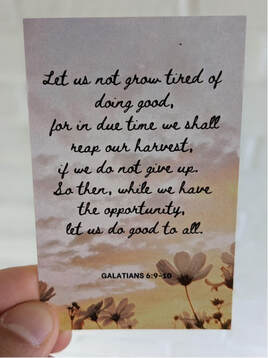 My wife and I made this prayer card for our parish to be distributed to parishioners this Easter. Our parish merged with another two years ago and we are still finding our way together as a new community. It is a time of transition, having lost familiar parishioners while gaining new ones along with a new pastor. We chose this passage from St. Paul’s letter to the Galatians because the verse speaks to a time of renewal, like spring, for our lives as Catholics today. The Eucharistic Revival is a time of renewal, a time to reawaken and deepen our relationship with Christ in the Eucharist. One opportunity to do this is by doing good to others. Sacraments and Social Mission: Living the Gospel, Being Disciples, a document created by the U.S. Conference of Catholic Bishops, explains that there is an intrinsic connection between the Eucharist and charity. The chapter on the Eucharist takes an excerpt from Pope Emeritus Benedict XVI’s encyclical Deus Caritas Est: “A Eucharist which does not pass over into the concrete practice of love is intrinsically fragmented” (no. 14). Amidst the frustrations and fatigue we bear due to what is going on in the Church and the world, God presents us with new opportunities to begin again. Like flowers blossoming and trees budding in the spring, our spirit is renewed each time we encounter Christ in the Eucharist. But flowers and trees need to be nurtured and so does our relationship with Christ in the Eucharist. To nurture costs love—giving our entire self. Christ gives his entire self in the Eucharist, and we are called to do the same in the world by being his hands and feet for others. Holy Thursday is special for me because I always hold on to the last two verses of the reading from John 13: “If I, therefore, the master and teacher, have washed your feet, you ought to wash one another’s feet. I have given you a model to follow, so that as I have done for you, you should also do” (Jn 13:14-15). Jesus gives us a model for discipleship. Reflecting on the Triduum, I think of how tired Jesus must have been throughout his Passion. He could’ve stopped at any point from exhaustion, but he persisted. If we truly desire to follow him, do we raise reasons for ourselves to stop? Perhaps it is frustration or fatigue. We are human and those reasons are to be expected, but we are not limited by or bound to them. To be disciples, Jesus calls us to never tire. Each day is a new opportunity to do something good. It does not have to be something big, but we need to start in order for that good to blossom. I offer a quote for reflection by Servant of God Dorothy Day: “Young people say, what good can one person do? What is the sense of our small effort? They cannot see that we must lay one brick at a time, take one step at a time; we can be responsible only for the one action of the present moment. But we can beg for an increase of love in our hearts that will vitalize and transform all our individual actions, and know that God will take them and multiply them, as Jesus multiplied the loaves and fishes” (Dorothy Day, Loaves and Fishes, 176). During this Easter and Eucharistic Revival, a time for renewal, I hope we reawaken and deepen our relationship with Christ in the Eucharist through small acts of charity. When we receive Christ in the Eucharist, may this relationship of love extend to charity towards those we encounter in our community. If we ever tire, may it be an opportunity to draw closer to Christ. Let us not tire of starting over again to do good. I hope our parishioners will find similar inspiration as we continue growing together as one faith community. Tomorrow, we celebrate the birthday of St. Vincent Pallotti, patron of the Catholic Apostolate Center and founder of the Union of Catholic Apostolate. St. Vincent Pallotti was born on April 21, 1795. How appropriate for the saint who lived and worked in the city of Rome to share his birthday with the traditional date for the founding of the city. To help celebrate his birthday, I have put together a list of some of his more interesting achievements and activities during his life. I hope that you too will be inspired by his life. 1) The Baptism of St. Vincent Pallotti St. Vincent Pallotti was baptized on April 22, 1795 in the St. Lawrence Church in Rome. This began his life in the church. 2) St. Vincent Pallotti on Holiday On his arrival in Frascati around 1805, St. Vincent Pallotti exchanged his new shoes for that of a poor boy. Giving away his new clothing to the poor would become a lifelong habit for the saint. 3) St. Vincent Pallotti Makes a Prediction While speaking with the young Giovanni Mastai-Ferretti in 1817, St. Vincent Pallotti predicted that he would one day be elected to the papacy. Mastai-Ferretti was elected Bishop of Rome on June 16, 1846. 4) St. Vincent Pallotti the Professor St. Vincent Pallotti was awarded two doctoral degrees in both theology and philosophy in 1814 and 1819. Teaching was one of the favorite activities of the saint. 5) St. Vincent Pallotti Showing Courage During the cholera epidemic of 1837, St. Vincent Pallotti organized a barefoot procession of religious. This action was penitential and showed that they were not afraid of the disease. 6) Catholic Apostolate Received Church Approval St. Vincent Pallotti received approval for the Catholic Apostolate from the Church in 1835. Pallotti also received support for the Catholic Apostolate from Pope Gregory XVI when others objected to it. 7) St. Vincent Pallotti the Chaplain Beginning in 1838, St. Vincent Pallotti served as a prison chaplain in Rome. He often worked with the condemned, saving many souls. He had a true willingness to serve all, especially the poor and the marginalized. 8) St. Vincent Pallotti the Peacekeeper St. Vincent Pallotti stopped a riot in the Trastevere neighborhood of Rome. He implored the people to stop rioting by showing them an image of Mary, Mother of Divine Love. 9) St. Vincent Pallotti Preaches one Last Time On the last day of the octave of the Epiphany in 1850, St. Vincent Pallotti gave his final sermon. 10) St. Vincent Pallotti Dies In 1850, St. Vincent Pallotti gave his final blessing to his followers. He showed great courage even in the face of death. There are many more stories about St. Vincent Pallotti that you may find interesting. Check out our St. Vincent Pallotti Portal to learn more about our patron and his many works. **This post was originally published on 1/21/2021** |
Details
Archives
July 2024
Categories
All
|
About |
Media |
© COPYRIGHT 2024 | ALL RIGHTS RESERVED

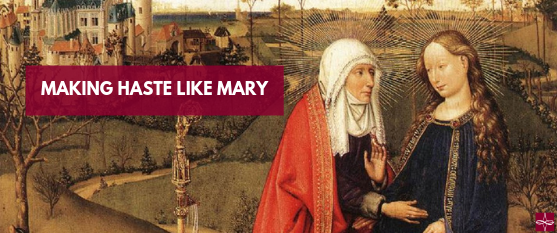

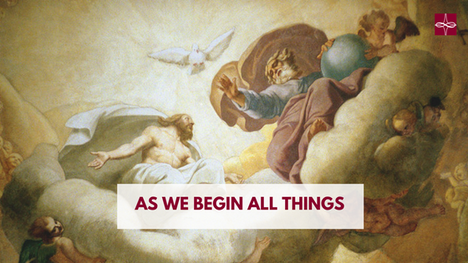
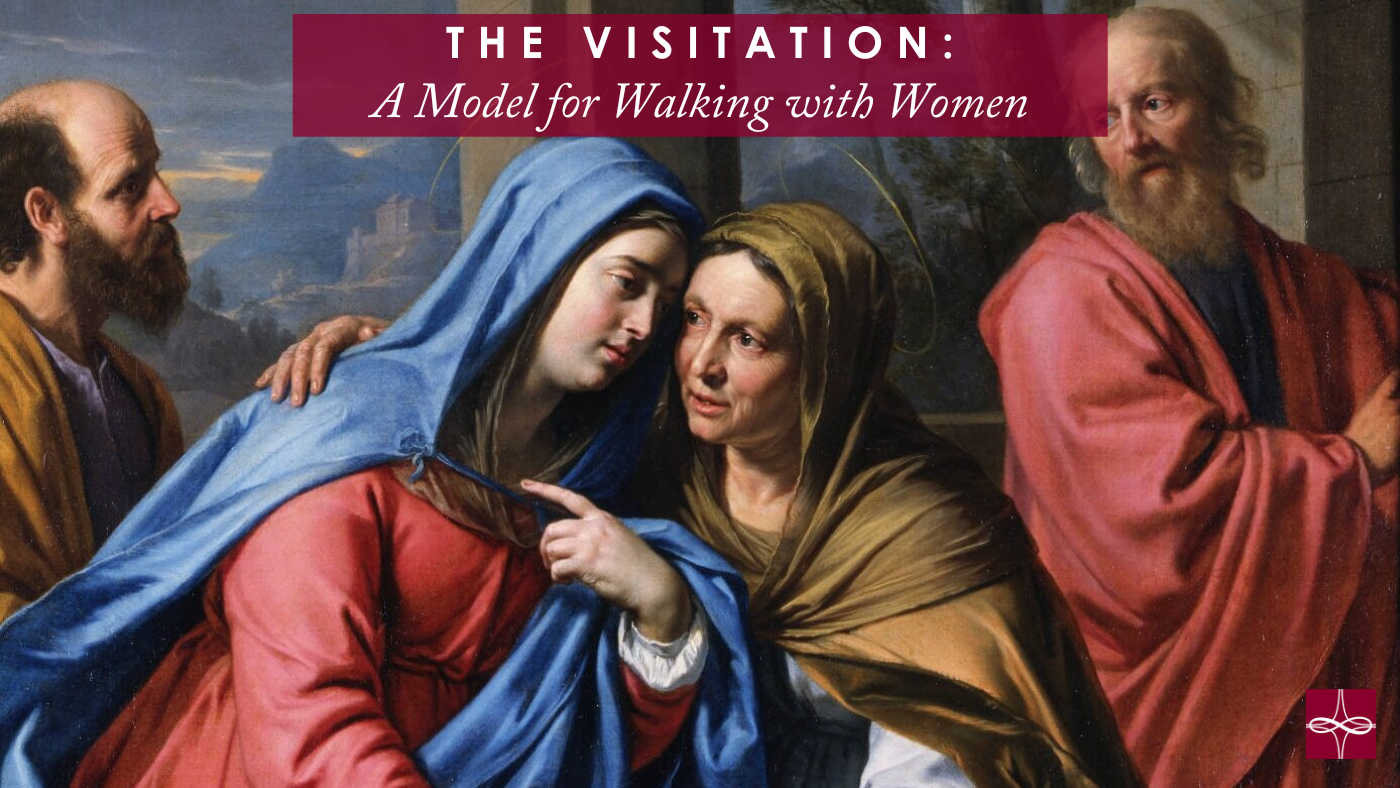

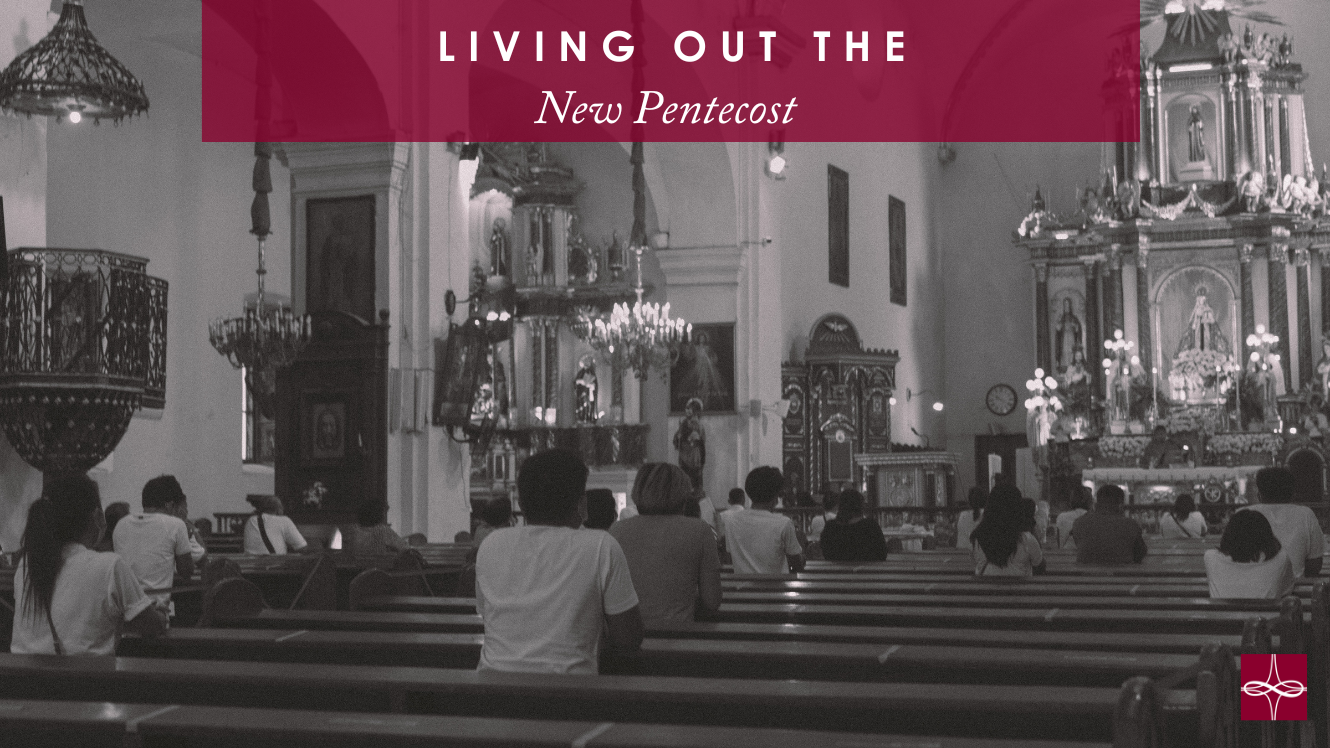

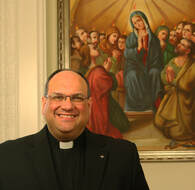
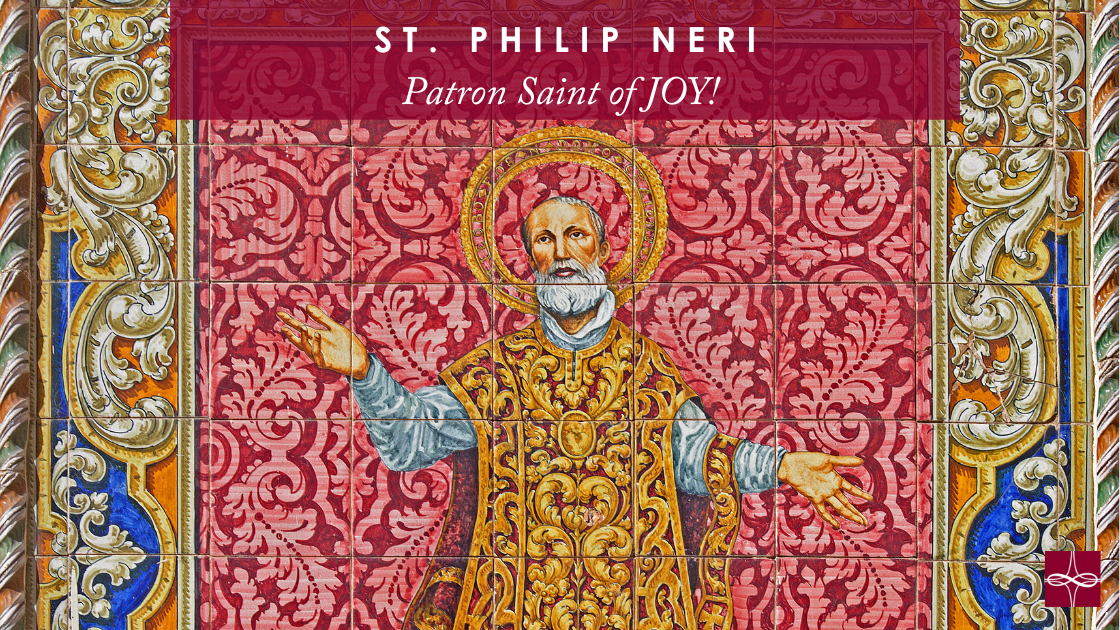
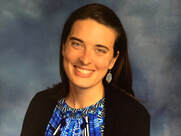
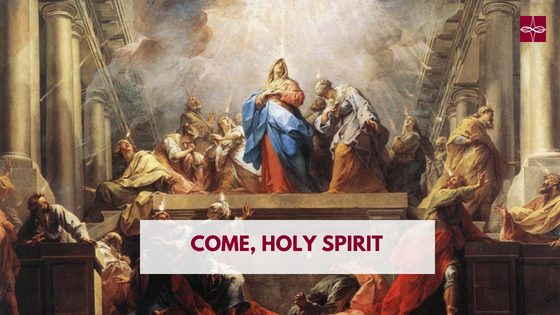

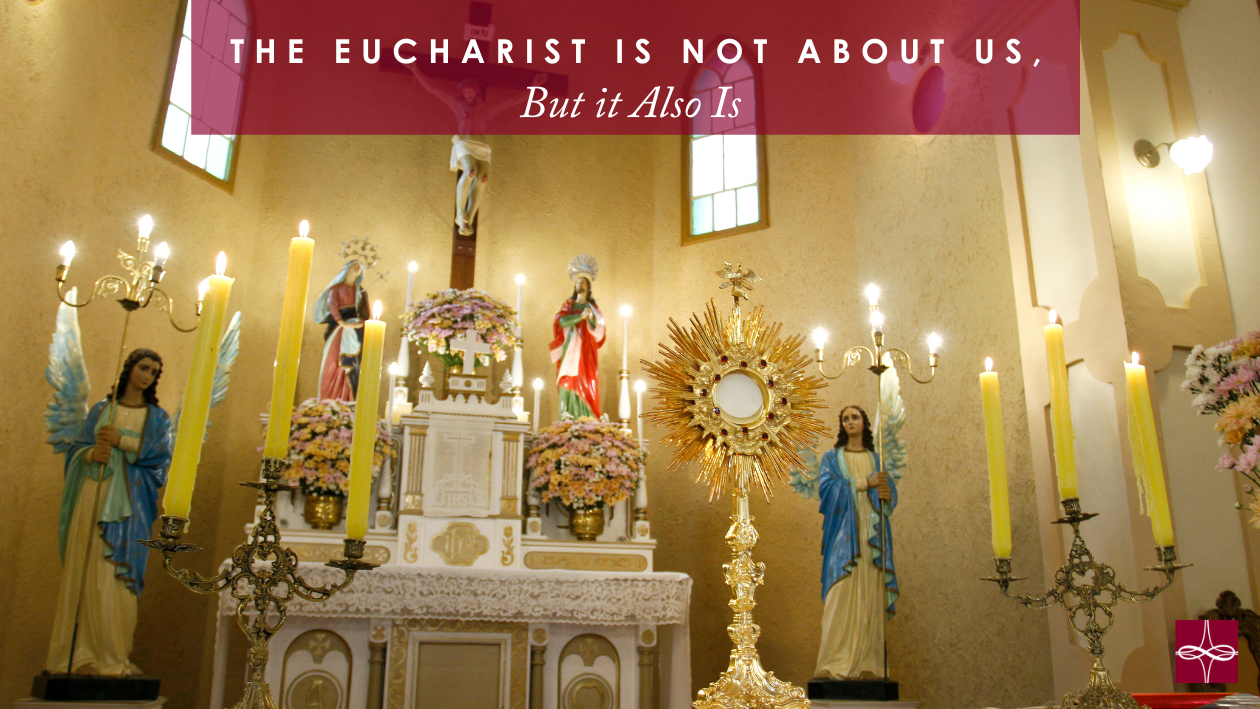


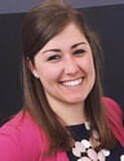

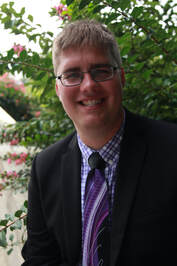

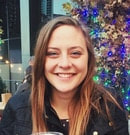
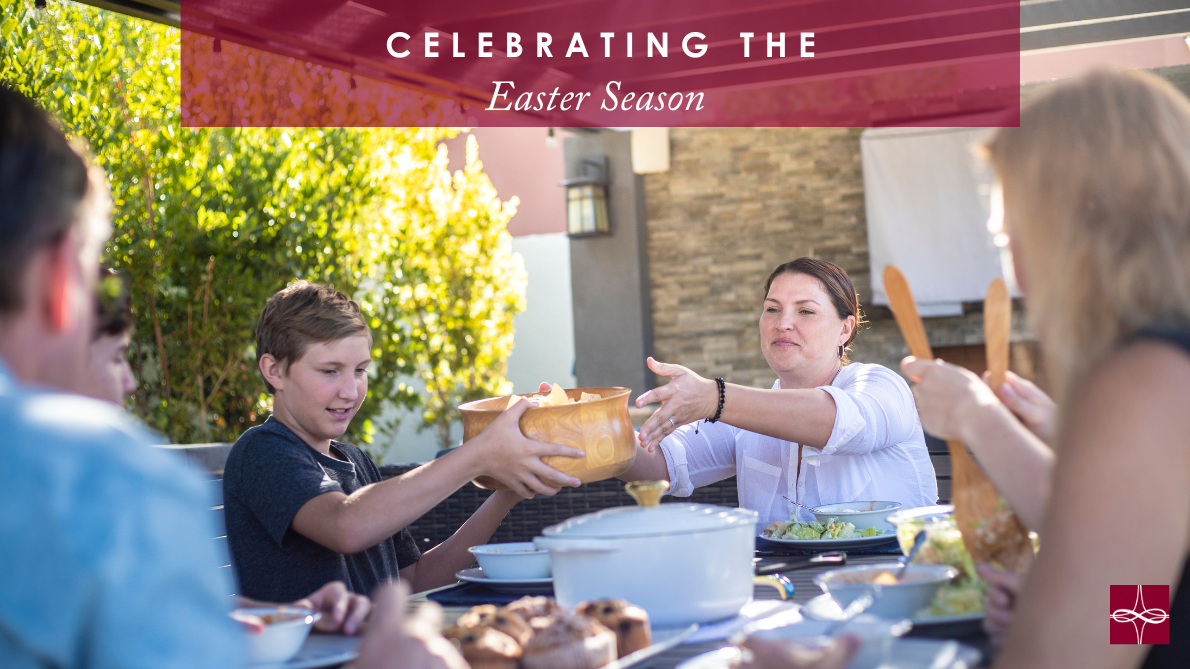
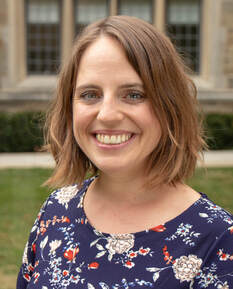

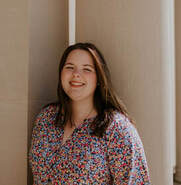

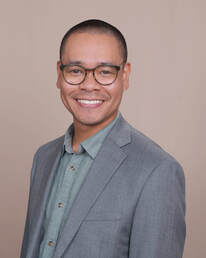
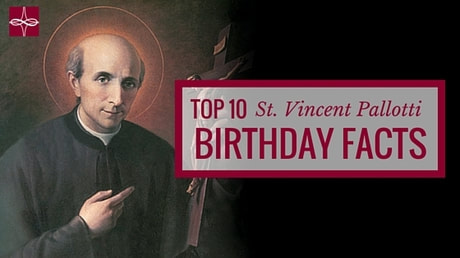

 RSS Feed
RSS Feed